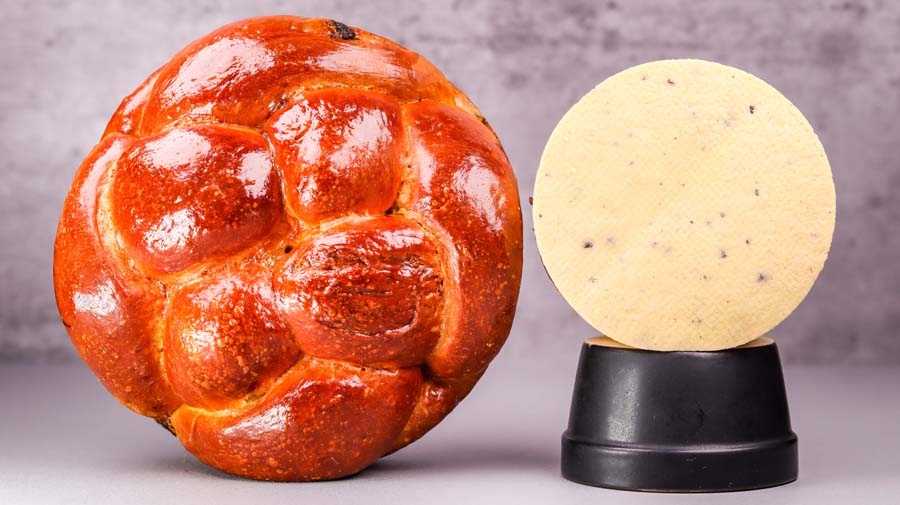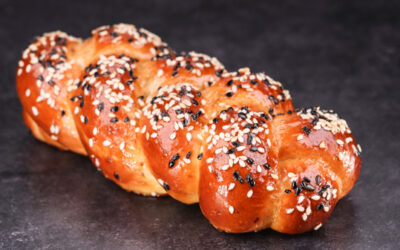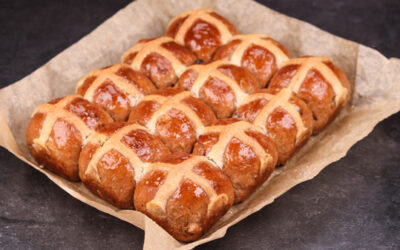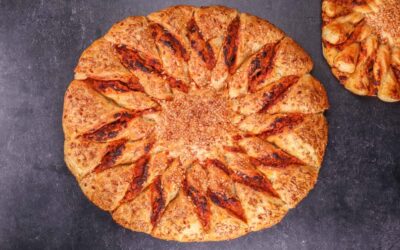This type of cheese is quite common in some Eastern European countries. We have made something similar in the past when I showed you the unique midsummer cheese from my country, Latvia. As it turns out, this type of cheese is also traditionally eaten during Easter in countries like Ukraine and Slovakia. Usually, served with sweet, enriched bread and slices of cold cuts.
This is the fourth cheese and bread project on the channel, and I just love doing them because they are so fun. What I like the most is that I can use the leftover liquid from the cheese making process to then make the bread dough with.
You can customize both the cheese and the bread to your taste. Add some herbs or roasted vegetables to the cheese, or some seeds perhaps. Skip the saffron in the bread and flavour it with cinnamon or clove instead. As long as you stick to the base recipes and the given quantities you can modify them as you wish.
Ingredients
For the cheese –
12 medium eggs (600g; 1.3lb)
1l (0.25gal) full fat milk (3.7%)
6g (0.21oz) salt
3g (0.1oz) ground black pepper
For the bread –
300g (10.6oz) white bread flour
1 medium egg (50g; 1.75oz)
6g (0.21oz) salt
6g (0.21oz) vanilla paste
5g (0.17oz) instant dry yeast or 6g (0.21oz) active dry yeast or 15g (0.53oz) fresh yeast
0.5g (0.017oz) saffron
30g (1oz) butter
25g (0.9oz) honey
115g (4oz) whey
60g (2.1oz) raisins
1 egg for glazing
To learn more about no-knead bread dough temperature control click here.
The flour I use has a protein content of 13%. If your flour is weaker, then you may need to lower the hydration.
If you are using active dry yeast, then you may need to let it sit in the water for 10 minutes before adding the other ingredients or else it could take a lot longer to raise the dough.
If you are curious about why the dough contains butter, egg, and honey, click the links to learn more about the effects those ingredients have on bread dough.
Method
- Make the cheese. Drop the eggs in a large pot and whisk. Add the salt, pepper, and milk. Whisk until combined. Place the pot on medium-high heat and cook for around 10 – 12 minutes until the curds separate and start resembling scrambled eggs.
- Pour the contents of the pot into a cheesecloth lined colander placed over a bowl. Drain the curd, wrap it up, press it with something heavy, and leave to cool down at room temperature. Reserve the whey.
- After weighing out the required amount of whey add the raisins and saffron to it and leave to soak while the liquid is cooling down.
- Once the whey has cooled down add the yeast, salt, honey, vanilla paste, melted butter, and egg to it. Mix until well combined. Add the flour and mix to a dough. *Desired dough temperature 25C – 26C (77F – 79F). Now you can either refrigerate it for cold fermentation or leave it out to bulk ferment at room temperature. Bulk fermentation at room temperature will take around 2 – 2.5 hours. Let the dough grow to double its size before diving.
- Cover and refrigerate for 30 minutes.
- Fold.
- Cover and cold ferment for 18 – 24 hours.
- Divide the dough into 4 equal pieces and pre-shape into little cylinder shapes. Cover and rest for 45 minutes. When bulk fermenting at room temperature let the dough rest for around 20 – 30 minutes.
- Roll the cylinders out to long strands around 30cm (1ft) long. Braid the loaf.
- Pace in a round cake tin or leave it as a freestanding loaf on a non-stick paper lined baking tray.
- Cover and proof for 3.5 – 4 hours or until it has doubled in size. To make it rise quicker place it in a warmer area. When bulk fermenting at room temperature the final proof should take significantly less time. Around 2 hours should do it.
- Brush the loaf with egg and bake at 150C (300F) for around 45 minutes.
Leave to cool down and enjoy delicious sandwiches of homemade bread and cheese!
Keep in mind that the conditions in each kitchen are different, so fermentation times may vary for you. It is up to the baker to control the bread and react accordingly.
Your oven may be different too, so your baking time may vary.



